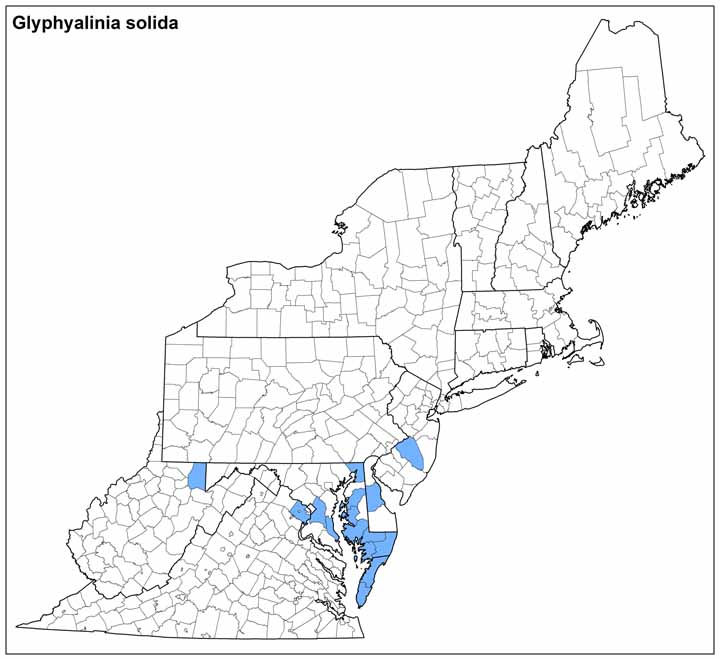Land Snails
.jpg)
.jpg)
.jpg)
Photo(s): The shell of Glyphyalinia solida, images © Dan Dourson.
Click photo(s) to enlarge.
Glyphyalinia solida (H.B. Baker, 1930)
Family: Zonitidae
Common name: Solid Glyph
Identification
Width: 7.5 mm
Height: 4.0 mm
Whorls: 5.3
Glyphyalinia solida is a moderate to large glyph, with a depressed shell that has rapidly expanding whorls. The expanding edge of the inner lip forms a tongue-shaped projection that fills the umbilicus. The shell is translucent pale-brown to almost chestnut and sculptured with widely and uniformly spaced impressed lines that parallel the nearly imperceptible growth lines. This sculpture is strong apically and continues to the umbilicus. Spiral engraved lines can often be seen under high magnification.
This animal’s dorsal surface is blue-grey, fading towards the sole of the foot. Both the epiphallus and penial retractor muscle join the penis sub-apically, and the apical chamber of the penis contains papillae.
Ecology
Glyphyalinia solida is found in moist leaf litter in forested ravines and hillsides as well as in swamps. Although often found upon limestone geology, this species is tolerant of a wide range of soil pH and can occur on acidic, neutral, and basic soils (Nekola, 2010).
Taxonomy
A synonym for this species is Retinella cryptomphala solida.
Distribution
This species is widely distributed from Maryland to Florida and west to Oklahoma, with a single unverified record in Michigan. In Virginia the species is reported from scattered locations across the state.
Conservation
NatureServe Global Rank: G5, Secure.
John Slapcinsky 10/2012
Range Map (click to enlarge)


